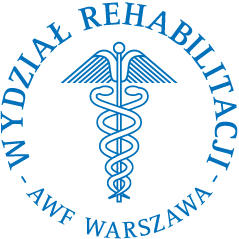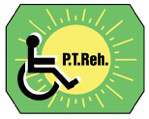


|
Current issue
Archive
Manuscripts accepted
About the journal
Editorial board
Reviewers
Abstracting and indexing
Contact
Instructions for authors
Publication charge
Ethical standards and procedures
Editorial System
Submit your Manuscript
|
1/2024
vol. 38 Original article
Adults with acquired brain injury at inpatient rehabilitation: discharge comparison of patient-reported outcomes at follow-up with functional status
Pamela S Roberts
1
,
Debra Ouellette
2
,
Jeffrey Wertheimer
1
1.
Cedars-Sinai and California Rehabilitation Institute, Los Angeles (CA), United States
2.
Casa Colina Hospital and Centers for Healthcare, Ponona (CA), United States
Advances in Rehabilitation, 2024, 38(1), 43–51
Online publish date: 2024/03/27
Article file
- Roberts-2024_04_29.pdf
[0.46 MB]
ENW EndNote
BIB JabRef, Mendeley
RIS Papers, Reference Manager, RefWorks, Zotero
AMA
APA
Chicago
Harvard
MLA
Vancouver
1. Lavallee DC, Chenok KE, Love RM, Petersen C, Holve E, Segal CD, et al. Incorporating Patient-Reported Outcomes Into Health Care To Engage Patients And Enhance Care. Health Aff (Millwood). 2016; 35(4): 575–82. 2.
Hudon C, Fortin M, Haggerty JL, Lambert M, Poitras ME. Measuring patients’ perceptions of patient-centered care: a systematic review of tools for family medicine. Ann Fam Med. 2011; 9: 155–64. 3.
Kupfer DJ, Frank E, Phillips ML. Major depressive disorder: new clinical, neurobiological, and treatment perspectives. Lancet. 2012; 379(9820): 1045–55. 4.
Reeves M, Lisabeth L, Williams L, Katzan I, Kapral M, Deutsch A, et al. Patient-Reported Outcome Measures (PROMs) for Acute Stroke: Rationale, Methods and Future Directions. Stroke. 2018; 49(6): 1549–56. 5.
U.S Department of Health and Human Services Food and Drug Administration. Patient-Reported Outcome Measures: Use in Medical Product Development to Support Labeling Claims. [Internet] 2009 Dec [cited 2024, March 2]. Available from: https://www.fda.gov/regulatory-information/search-fda-guidance-documents/patient-reported-outcome-measures-use-medical-product-development-support-labeling-claims 6.
Weldring T, Smith SM. Patient-Reported Outcomes (PROs) and Patient-Reported Outcome Measures (PROMs). Health Serv Insights. 2013; 6: 61–8. 7.
Price-Haywood EG, Harden-Barrios J, Carr C, Reddy L, Bazzano LA, van Driel ML. Patient-reported outcomes in stroke clinical trials 2002-2016: a systematic review. Qual Life Res. 2019; 28(5): 1119–28 8.
Tulsky DS, Kisala PA, Victorson D, Carlozzi N, Bushnik T, Sherer M, et al. TBI-QOL: Development and Calibration of Item Banks to Measure Patient-reported Outcomes Following Traumatic Brain Injury. J Head Trauma Rehabil. 2016; 31(1): 40–51. 9.
Duncan EA, Murray J. The barriers and facilitators to routine outcome measurement by allied health professionals in practice: a systematic review. BMC Health Serv Res. 2012; 12: 96. 10.
Amtmann D, Cook KF, Johnson KL, Cella D. The PROMIS initiative: involvement of rehabilitation stakeholders in development and examples of applications in rehabilitation research. Arch Phys Med Rehabil. 2011; 92(10 Suppl): 12–9. 11.
Heinemann AW, Nitsch KP, Gracz K, Ehrlich-Jones L, Engel E, Wilson M, et al. Implementing Patient-Reported Outcome Measures in Inpatient Rehabilitation: Challenges and Solutions. Arch Phys Med Rehabil. 2022; 103(5S): 67–77. 12.
Katzan IL, Lapin B. PROMIS GH (Patient-Reported Outcomes Measurement Information System Global Health) Scale in Stroke: A Validation Study. Stroke. 2018; 49(1): 147–54. 13.
Centers for Medicare and Medicaid Services. IRF-PAI Manual-Version 4.0. [Internet]. Available from: https://www.cms.gov/Medicare/Quality-Initiatives-Patient-Assessment-Instruments/IRF-Quality-Reporting/IRF-PAI-and-IRF-PAI-Manual 14.
Cella D, Riley W, Stone A, Rothrock N, Reeve B, Yount S, et al. The Patient-Reported Outcomes Measurement Information System (PROMIS) developed and tested its first wave of adult self-reported health outcome item banks: 2005-2008. J Clin Epidemiol. 2010; 63(11): 1179–94. 15.
Hays RD, Bjorner JB, Revicki DA, Spritzer KL, Cella D. Development of physical and mental health summary scores from the patient-reported outcomes measurement information system (PROMIS) global items. Qual Life Res. 2009; 18: 873–80. 16.
Hays RD, Spritzer KL, Thompson WW, Cella D. U.S. General Population Estimate for "Excellent" to "Poor" Self-Rated Health Item. J Gen Intern Med. 2015; 30(10): 1511–6. 17.
Lee SB, Oh JH, Park JH, Choi SP, Wee JH. Differences in youngest-old, middle-old, and oldest-old patients who visit the emergency department. Clin Exp Emerg Med. 2018; 5(4): 249–55. 18.
Alterovitz SS, Mendelsohn GA. Relationship goals of middle-aged, young-old, and old-old Internet daters: an analysis of online personal ads. J Aging Stud. 2013; 27(2): 159–65. 19.
Silva J, Ownsworth T, Shields C, & Fleming J. Enhanced Appreciation of Life Following Acquired Brain Injury: Posttraumatic Growth at 6 Months Postdischarge. Brain Impairment. 2011; 12(2): 93–104. 20.
Sargent-Cox KA, Anstey KJ, Luszcz MA. The relationship between change in self-perceptions of aging and physical functioning in older adults. Psychol Aging. 2012; 27(3): 750–60. 21.
Mavaddat N, Sadler E, Lim L, Williams K, Warburton E, Kinmonth AL, et al. What underlies the difference between self-reported health and disability after stroke? A qualitative study in the UK. BMC Neurol. 2021; 21(1): 315. 22.
WHO. International Classification of Functioning, Disability and Health (ICF). Geneva: WHO Press; 2001. 23.
Dell'Osso L, Lorenzi P, Nardi B, Carmassi C, Carpita B. Post Traumatic Growth (PTG) in the Frame of Traumatic Experiences. Clin Neuropsychiatry. 2022; 19(6): 390–3. 24.
Karagiorgou O, Evans JJ, Cullen B. Post-traumatic growth in adult survivors of brain injury: a qualitative study of participants completing a pilot trial of brief positive psychotherapy. Disabil Rehabil. 2018; 40(6): 655–9. 25.
De Witte L, Brouns R, Kavadias D, Engelborghs S, De Deyn PP, Mariën P. Cognitive, affective and behavioural disturbances following vascular thalamic lesions: a review. Cortex. 2011; 47(3): 273–319. 26.
Guo J, Wang J, Sun W, Liu X. The advances of post-stroke depression: 2021 update. J Neurol. 2022; 269(3): 1236–1249. 27.
Hamano T, Li X, Lonn SL, et al. Depression, stroke and gender: evidence of a stronger association in men. J Neurol Neurosurg Psychiatry. 2015 Mar: 86 (3): 319-23. doi: 10.1136/jnnp-2014-307616. 28.
Kapral MK, Fang J, Hill MD, Silver F, Richards J, et al. Sex differences in stroke care and outcomes: results from the Registry of the Canadian Stroke Network. Stroke. 2005; 36(4): 809–14. 29.
Dulay MF, Criswell A, Hodics TM. Biological, Psychiatric, Psychosocial, and Cognitive Factors of Poststroke Depression. Int J Environ Res Public Health. 2023; 20(7): 5328. 30.
Gargano JW, Reeves MJ, Paul Coverdell National Acute Stroke Registry Michigan Prototype Investigators. Sex differences in stroke recovery and stroke-specific quality of life: results from a statewide stroke registry. Stroke. 2007; 38(9): 2541–8. 31.
Shi Y, Yang D, Zeng Y, Wu W. Risk Factors for Post-stroke Depression: A Meta-analysis. Front Aging Neurosci. 2017; 9: 218. 32.
Cogan AM, McCaughey VK, Scholten J. Gender Differences in Outcomes after Traumatic Brain Injury among Service Members and Veterans. PM R. 2020; 12(3): 301–14. 33.
Hellewell SC, Beaton CS, Welton T, & Grieve SM. Characterizing the Risk of Depression Following Mild Traumatic Brain Injury: A Meta-Analysis of the Literature Comparing Chronic mTBI to Non-mTBI Populations. Front Neurol. 2020; 11: 350. 34.
Lavoie S, Sechrist S, Quach N, Ehsanian R, Duong T, Gotlib IH, et al. Depression in men and women one year following traumatic brain injury (TBI): a TBI model systems study. Front Psychol. 2017; 8: 634. 35.
Roy D, Koliatsos V, Vaishnavi S, Han D, Rao V. Risk Factors for New-Onset Depression After First-Time Traumatic Brain Injury. Psychosomatics 2018; 59(1), 47–57. 36.
Dupre ME, Lopes RD. Marital History and Survival After Stroke. J Am Heart Assoc. 2016; 5(12): e004647.
This is an Open Access journal, all articles are distributed under the terms of the Creative Commons Attribution-NonCommercial-ShareAlike 4.0 International (CC BY-NC-SA 4.0). License (http://creativecommons.org/licenses/by-nc-sa/4.0/), allowing third parties to copy and redistribute the material in any medium or format and to remix, transform, and build upon the material, provided the original work is properly cited and states its license.
|
    |